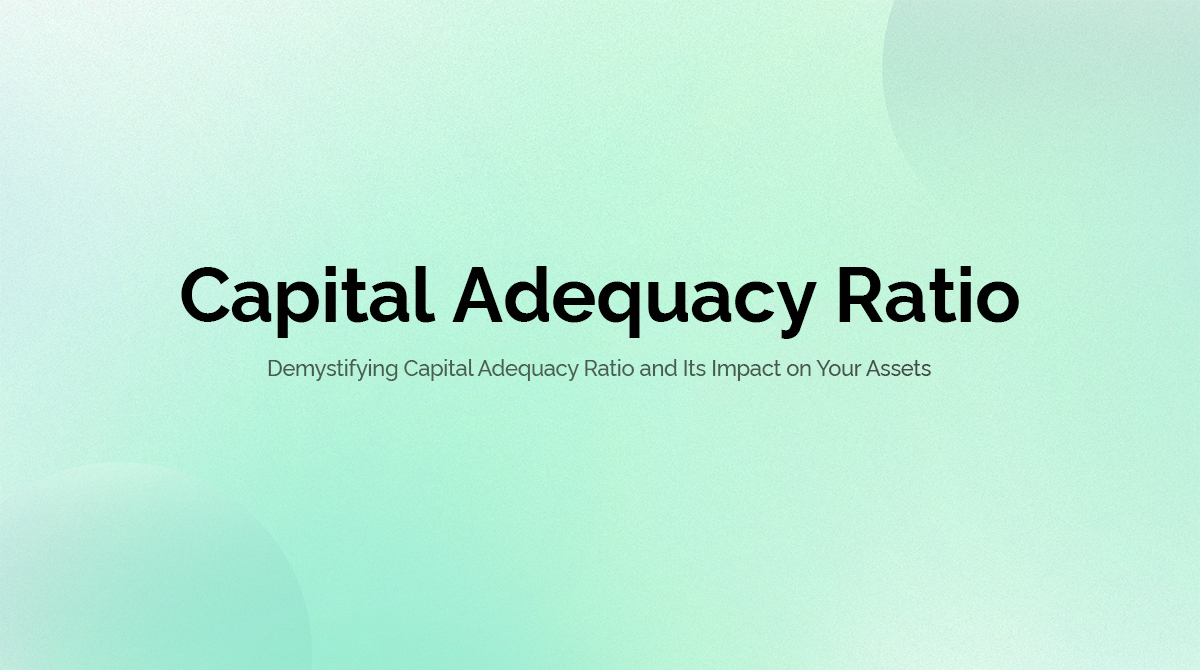In the realm of finance, understanding the intricacies of banking metrics is crucial, especially when it comes to safeguarding your hard-earned funds and valuable assets. One such vital metric is the Capital Adequacy Ratio (CAR). In this blog post, we’ll unravel the mysteries surrounding the Capital Adequacy Ratio, explore how it’s calculated, and most importantly, understand how it can significantly impact your funds and assets.
What Is the Capital Adequacy Ratio
The Capital Adequacy Ratio (CAR) is a financial metric that plays a pivotal role in assessing a bank’s financial stability and its ability to absorb potential losses. It measures the proportion of a bank’s capital (i.e., its own funds) in relation to its risk-weighted assets. Simply put, it gauges whether a bank has enough capital to cover its risks and safeguard depositors’ funds.
Why the CAR Matters
Before diving into how the CAR can influence your funds and assets, let’s first understand why this metric is so vital:
- Financial Stability: A high CAR indicates that a bank has a robust financial position and is better equipped to weather economic downturns or unforeseen financial shocks. This stability directly impacts the safety of your funds deposited in that bank.
- Risk Mitigation: The CAR is designed to ensure that banks have enough capital to absorb potential losses. This, in turn, reduces the risk of your assets being impacted by a bank’s insolvency.
The Impact of a Low Capital Adequacy Ratio
While a high CAR is generally a positive sign, a low Capital Adequacy Ratio can have significant adverse effects on your funds and assets:
- Increased Risk of Default: A low CAR indicates that a bank has limited capital to absorb losses. In the event of a financial crisis or a surge in non-performing loans, such a bank may struggle to meet its obligations, putting your funds at risk.
- Reduced Lending Activity: Banks with inadequate capital may become reluctant to extend loans or credit lines. This can hinder your ability to access credit when needed, affecting your financial plans and investments.
- Higher Borrowing Costs: Banks with low CAR may compensate for their risk exposure by increasing interest rates on loans and credit cards. If you have outstanding loans, this can result in higher interest payments, impacting your finances.
- Investment Concerns: If you’re an investor, a bank with a low CAR can be a cause for concern. It signifies a higher degree of risk associated with your investments in the bank’s stocks or bonds. Your portfolio’s value could be at risk if the bank’s financial health deteriorates further.
- Uncertainty and Panic: News of a bank’s low CAR can lead to depositor anxiety and even panic withdrawals. Such actions can escalate the bank’s problems and create a ripple effect in the financial system, potentially affecting your assets elsewhere.
Factors Behind a Low Capital Adequacy Ratio
Understanding why a bank’s CAR is low is crucial for assessing the potential risks to your funds and assets. Several factors can contribute to a low CAR:
- High Levels of Non-Performing Loans: A significant volume of loans that aren’t being repaid can erode a bank’s capital base and lower its CAR.
- Inadequate Capital Reserves: Insufficient capital reserves, particularly Tier 1 capital, can leave a bank vulnerable to losses, dragging down its CAR.
- Economic Downturns: A weakening economic environment can lead to a surge in loan defaults, directly affecting a bank’s CAR. Economic factors such as rising unemployment, falling GDP growth, and high inflation can contribute to this negative trend.
- Poor Risk Management: Ineffective risk management practices within a bank can result in higher credit risk, which can, in turn, lower the CAR.
- Regulatory Actions: Regulatory authorities may impose restrictions or penalties on a bank due to compliance issues or concerns about its financial stability, which can impact the CAR negatively.
The Capital Adequacy Ratio is a critical metric that directly influences the safety of your funds and the stability of your assets. When this ratio is low, it can increase the risk of default, limit your access to credit, raise borrowing costs, and threaten your investments. It’s imperative to stay informed about the CAR of banks where you have financial interests, as it plays a significant role in protecting your funds and assets in an ever-evolving financial landscape.
